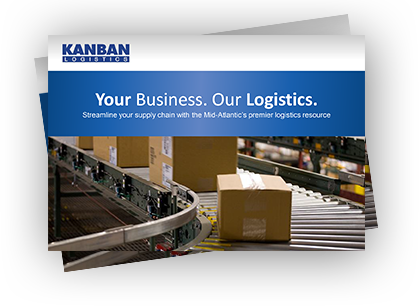The coronavirus has taught us all many valuable lessons. For companies within the healthcare and pharmaceutical industries, the pandemic has further highlighted the importance of supply chain visibility. In this article, we’ll examine the role that third-party logistics (3PL) companies can play in providing this visibility.
Supply chain visibility in the wake of COVID
 A recent article in Freight Waves shows that, while pharmaceutical companies have largely been buttoned up in terms of supply chain visibility, their healthcare counterparts have been slow to adopt visibility measures. This has led to well-publicized issues during the pandemic when it comes to locating vital supplies of PPE and medical equipment and getting those items to the people and facilities in need. Shortages of these supplies made headlines and shone a light on the lack of visibility within the healthcare supply chain.
A recent article in Freight Waves shows that, while pharmaceutical companies have largely been buttoned up in terms of supply chain visibility, their healthcare counterparts have been slow to adopt visibility measures. This has led to well-publicized issues during the pandemic when it comes to locating vital supplies of PPE and medical equipment and getting those items to the people and facilities in need. Shortages of these supplies made headlines and shone a light on the lack of visibility within the healthcare supply chain.
According to Matt Elenjickal, CEO of the supply chain analytics company FourKites, “The demand for visibility is through the roof because people finally realized how messed up supply chains are and how a single disruption can cause massive upstream and downstream impacts. People started scrambling for visibility. They wanted to know exactly where products were at any given time.”
To obtain supply chain visibility, healthcare companies are investing in the appropriate technologies themselves – or partnering with a 3PL provider that already has that technology in place.
Partnering with a 3PL for supply chain visibility
A key benefit of partnering with a 3PL for warehousing and other supply chain services is that most 3PLs already have sophisticated visibility-providing systems in place. At the heart of any modern 3PL warehousing operation is its warehouse management system (WMS). The WMS is a software-based system that performs a variety of functions related to goods arriving to the warehouse; goods stored within the warehouse; and goods leaving the warehouse. Its basic capabilities include:
- Warehouse inventory management: The WMS manages key characteristics like product location, on-hand quantity, pallet ID numbers and, where applicable, lot number, serial number, and/or expiration date. This information can be accessed in real-time by the 3PL’s warehousing customers.
- Order management: Shipment status, parcel tracking information, and other information can be viewed – and is automatically updated – within the WMS.
The order management capabilities of WMS systems are essential for companies seeking supply chain visibility. Not only does the WMS provide visibility into inventory within a warehouse, it can provide visibility into goods coming into the warehouse and heading out to customers. It does this by integrating with a company’s own systems, effectively giving companies a window into the movement of their goods.
Importantly, such WMS systems come with a hefty price tag. With a shared warehousing arrangement with a 3PL, however, you share systems, warehouse space and resources with other companies, resulting in a significantly lower financial investment than going it alone.
Lean on Kanban Logistics for supply chain support
Kanban Logistics is a North-Carolina-based 3PL company with over 1 million square feet of warehousing space in the Eastern part of the state. This expansive physical infrastructure is supported by a sophisticated systems and WMS infrastructure to support our customers’ growth and assure regulatory compliance. As an ISO-9001-certified 3PL, our customers rest easy knowing that every aspect of their operations follows strict quality protocols. To learn more about entrusting key elements of your supply chain to a 3PL, contact us today.
Never Miss a Blog Post
Join our email list to receive new posts in your inbox. We will never spam you. Opt out anytime.
Blog Post Categories
- Outsourcing 3PL (72)
- Warehousing (72)
- North Carolina (52)
- east coast logistics (47)
- manufacturing logistics (26)
- Food Logistics (19)
- Fulfillment (18)
- CSX Carolina Connector (17)
- Miscellaneous (14)
- Free Trade Zone (FTZ) (12)
- FTZ / Free Trade Zones (11)
- Intermodal (11)
- Rail Siding (11)
- Port of Virginia (10)
- Cross Docking (7)
- Kitting (5)
- Aerospace (3)
- Pharmaceutical (3)
- Kanban News (2)
- QVC Rework Services (2)
- COO (1)
- container yard services (1)
- flexible (1)
- operations (1)
- scale (1)
- scott freeman (1)






